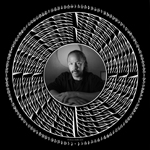John Chalmers Interview
Take a walk with UC San Diego astrobiologist, Probiotic Chemist, and Microtonal Music Theorist, Dr. John H. Chalmers, as he describes the musical mathematics of some of Wilson’s pitch structures.
Transcript of Dr. John H. Chalmers Interview
DR. JOHN H. CHALMERS: Erv’s been a source of inspiration for 45 years. Erv is one of the most intuitive mathematicians that I’ve ever known. That he just sees relationships that other people don’t. That he’s rediscovered a number of things that have been done formally by other people but he just does it in his head.
Like those projections of those scales, they correspond to projections of higher order polytopes, polychorons this sort of thing. And he just visualized it. Yeah that six dimensional thing, the eikosany projections, you know, it just sort of came to him. And the Scale Tree turns out to be mathematically equivalent to either the Viggo Brun, subtractive version of the Euclidean algorithm, or “continued fractions” and he just came across that, intuitively.
He has an amazing mind, it’s multi-dimensional geometry, as well as, well it’s sometimes called “higher arithmetic” or “discreet mathematics.” A lot of it is “combinatorial math.” It sort of falls between some cracks. It does different things, but Erv came across it on his own.
And the projections of those figures, is something that’s really, they called maybe “modern synthetic geometry” or “projected geometry.” And he does that completely intuitively. For example, he has those triads, they’re not “just intonation”, but the difference tones are in tune and the beating rates are proportional.
STEPHEN JAMES TAYLOR: Would you call Erv kind of a cartographer in a sense?
DR. JOHN H. CHALMERS: Of unknown perceptual worlds? Yeah you could call him that. He’s certainly an explorer. I think he’s the most intuitive mathematician I’ve ever known. I think it’s because he has these immense powers of visualization.
When he first had that circular projection of the eikosony, with one tone on the outside, one on the inside, he said he just visualized it one night. It came to him. And I don’t think he knew anything about multidimensional geometry. This just completely popped into his mind.
STEPHEN JAMES TAYLOR: His ability to rotate those objects.
DR. JOHN H. CHALMERS: Yeah, yeah, yeah very much so. He can sort of see higher dimensional space, the way he can rotate these things, do the projections of all these things. He has these sheets–I’ve got a lot of them–of things, of all the rotations around each of the tones. Sheets that you can draw and write them out yourself if you want to. Once again, I think he’s taken the generalized keyboard idea and applied it to many different systems.
Directed, edited, and music scored by Stephen James Taylor. The music in the Dr. John H. Chalmers Interview employs Erv Wilson’s CoPrime Grid, Moments of Symmetry, and 31 Equal Temperament.
For more on Dr. John H. Chalmers go to:
http://sonic-arts.org/chalmers/chalmers.htm
Latest posts by Stephen James Taylor (see all)
- Stephen James Taylor Presents New Works on April 13-14, 2019 - March 30, 2019
- Sonic Sky Records Announces Its First Release - September 14, 2015
- How to Make Music on the Wilsonic iPad App – Moments of Symmetry - March 4, 2015


No Comments yet
Be the first to write a comment